|
|
| Help | |
| You are here: Rediff Home » India » Get Ahead » Study Abroad |
|
| |||||||||||||||||||||||
|
| |||||||||||||||||||||||
As part of our series on the IELTS, a system that tests the English capabilities of people hoping to study or work abroad, we looked at the various sub-sections under the reading section last week and the type of questions you can expect. This week, experts from TCYonline look at the writing section and how you can improve your score with a simple-to-practice strategy.
Just as the reading section has a different format for the Academic and General Training questions, the writing section too has the same.
Both categories expect the test taker to complete two tasks. The only difference is in Task I, which in the case of Academic IELTS is some sort of a diagram such as a line graph, a bar graph, a pie chart or sometimes a combination of two or even more of these items. Sometimes candidates get a process chart or a table containing information.
On the other hand, in the General Training IELTS, the first task is a Letter. In all the Academic cases you have to achieve the task in about 150 words and you are recommended to spend about 20 minutes on this task. Remember, there is only one question and you have no choice but to attempt answering the question you get.
Alternatively, in Task II one has to give one's perspective on an issue and it is recommended that the remaining 40 minutes be spent on this task.
In both tasks, you have to stick to the following procedure to produce a good piece of writing to ensure a high-band score.
Read: The first thing you have to do is to read the question and understand it. In both the tasks you need to understand as to what you are expected to do. In other words you must know your job before you actually attempt to execute it.
Think: The second thing you should do is to think about the question. Once you are sure about your job, you need to think for fresh ideas/ arguments and examples which you would like to develop in your explanation or essay. Do not forget to write down the ideas as they come to your mind. Once the ideas are ready, you may organise them in a logical manner. This means you will decide a sequence so that you can pick up your ideas one by one while writing.
Write: Once the points are organised, you can start writing. While writing stick to the focus of the question. Always avoid grammatical mistakes. Ensure that you clearly make your points and your examples and vocabulary are relevant. It is better to avoid very long and complicated sentences as this will not help the reader in any way. Remember that your essay is for someone to read, understand and judge.
Edit: The last, but probably the most important, step in a writing task is to check/ edit your work. This will help you to correct most of your errors at your own level before they reach the checker. Ensure that you check your work and make the necessary corrections before handing over the answer sheet to the examiner. It is rcommended that you a pencil for writing even though we are permitted to use a pen.
Tips for Task I
The General training Task I is the easiest of all. Moreover, you are not expected to write the salutation of the letter. This further simplifies the task. Many students find difficulty in explaining information or data from a given diagram. The main reason for this is that students normally are not in a position to understand the organisation and underlying patterns from a diagram.
Most of the time they just pick up numbers and quantities from left to right and make a kind of list of what they see in the diagram. Obviously this kind of a list will not serve any purpose. Remember, you are normally asked to prepare a report using the information in the diagram for a university presentation and it is obvious that a left to right listing of numbers and figures does not make a meaningful report.
~ Once the diagram is in front of you, spend a few minutes to understand and analyse it
~ Look for trends (like increasing/ decreasing / fluctuating etc)
~ Look for patterns, relationships
~ Sometimes the diagram may contain information that can be classified into different categories by applying some relevant criteria. This will help you explain things better.
After analysing the diagram you will get a clear picture about what the diagram is trying to tell you. It may be depicting a trend, a phenomenon that repeats itself after a fixed interval of time or a period of stability or volatility. In the nut shell, you must be focusing on the changes and variations and try to describe them using the right terms.
Vocabulary
Using the correct words to explain a phenomenon is very important. Let us see how trends should be explained in different situations.
~ A steady decline
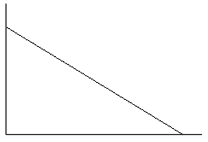
~ Almost steady
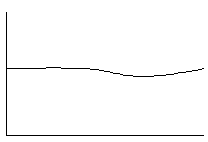
~ A fall before making a steady recovery
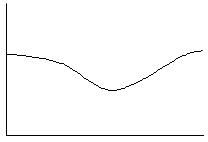
~ A case of wild fluctuation or frequent ups and downs
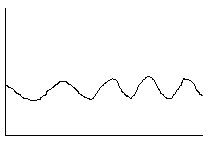
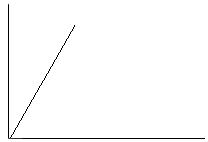
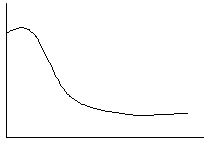

In this question the highlighted portions shows the focus of the question. The first two sentences give a background. Candidates are expected to discuss the effectiveness of monetary incentives and suggest other ways to motivate employees. An essay simply discussing the merits and demerits of monetary incentives will not serve the purpose.
Similarly, just discussing alternative incentive schemes will also not answer the question. The task here is to discuss the effectiveness of one scheme and then suggest better alternatives.
There are certain questions that ask you to express your views on an issue over which people have two different views. In such cases it is always better to take a view where you have more supporting arguments. Let us consider a question like:
"Should children always obey their parents?"
Often people take an emotional stand and say yes to a question like this without evaluating the arguments they have for and against the argument. The fact is that it is always better to take a stand which you can support with more arguments and examples rather than taking an emotional or moral stand and ending up with weak arguments.
An ideal essay should contain the following:
Para (1): Introduction -- A general introduction of the topic. This should contain your specific views on the topic (called the thesis statement). Declaring your views in the introduction will help you to decide the direction of your essay. This paragraph may contain 3-4 sentences.
Para (2): Point 1 (with example) in 7-8 sentences.
Para (3): Point 2 (with example) in 7-8 sentences.
Para (4): Point 3 in 7-8 sentences.
Para (5): Conclusion. You can also restate the views you presented in the thesis statement more forcefully here.
Each point should be developed into a paragraph. This should be done by using supporting details, explanations, examples, effects, causes etc. Always keep an eye on your thesis statement, though, to ensure that you are not going astray. Finally check your essay to avoid errors in grammar, spellings, usage and syntax to ensure the following:
~ The essay is progressing in the right direction strictly according to the focus of the question.
~ The content is relevant and well-organised, and meets the requirement of the question.
The writer is a Senior Verbal Trainer with Top Careers & You (www.TCYonline.com). Visit www.TCyonline.com/angrezi for more information on IELTS and innumerable FREE tests on Grammar and Vocabulary.
Part I: How to ace the Reading section
Part II: How to score in the Speaking section
|
|
| © 2008 Rediff.com India Limited. All Rights Reserved. Disclaimer | Feedback |